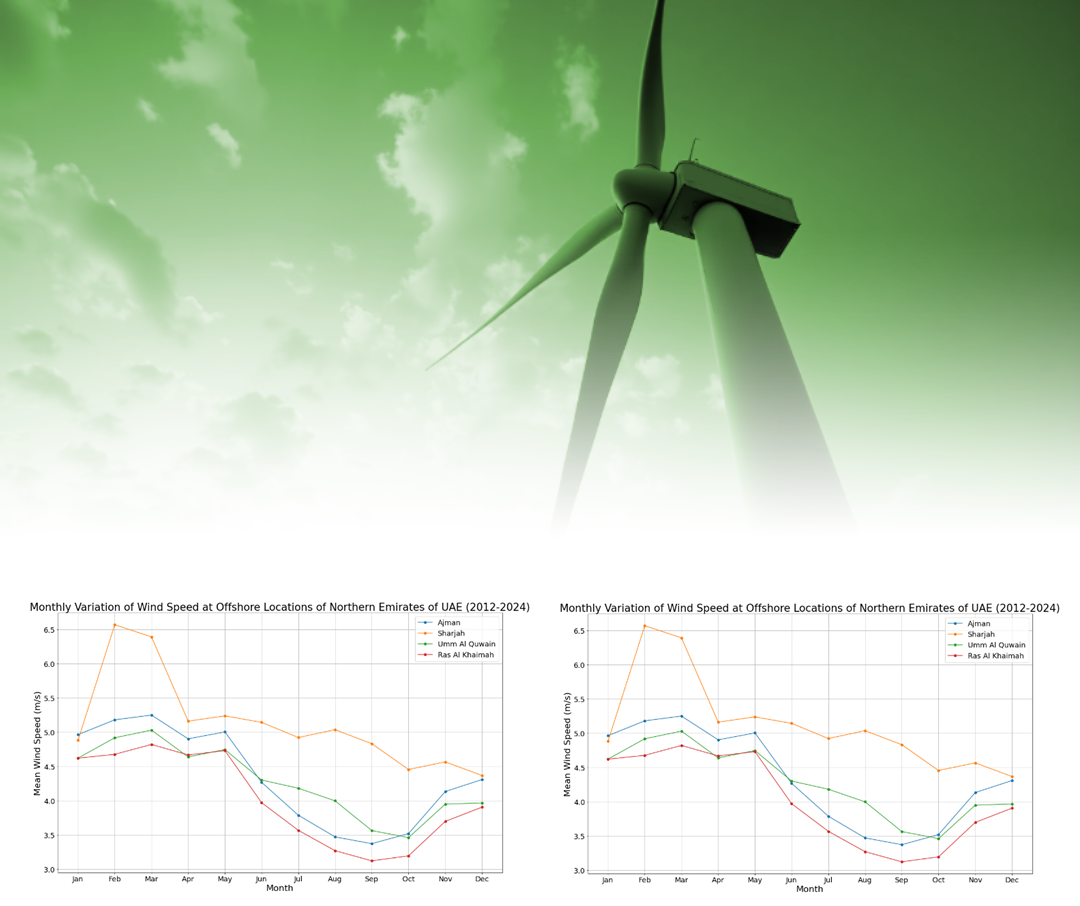Feasibility of Offshore Wind Energy in Northern United Arab Emirates: Diurnal Wind Dynamics and Turbine Power Curve Analysis.
DOI:
https://doi.org/10.14464/ess.v12i12.844Abstract
The United Arab Emirates (UAE) has been actively involved in organising and working on contributing towards achieving the decisions made at the COP28. The main aim has been exploring the options for a renewable energy mix. This study investigates the feasibility of offshore wind energy in the northern emirates of the UAE by analysing diurnal wind patterns, wind resource characterization, Weibull distribution curves, wind power density, and Wind turbine power curves across selected offshore locations in the emirate of Sharjah, Ajman, Umm Al Quwain, and Ras Al Khaimah using long 12 plus years of wind data (2012 to 2024 April). Exploratory statistical analyses, such as wind rose, and Weibull distribution estimations, provided critical results for sustainable wind energy planning and development. The performance of four different wind turbines is valuated at these locations, analysing their wind power output over a 24-hour period. These findings, directly affect the design and operation of wind energy systems and contribute to understand the wind energy dynamics and turbine behavior, which will lay the foundation for optimising and sustainable development of Offshore wind energy systems in the northern emirates of UAE. The practical implications of this study highlight its potential to assist in decision-making processes for the government, invite the investors and further facilitate the development of sustainable energy solutions in the region, and invite academic communities to do further research on economic feasibility for the sustainable wind power development aligning with the UAE's efforts to achieve renewable energy targets and mitigate climate change.

Downloads
Published
Issue
Section
License
Copyright (c) 2025 Abdul Salam Darwish, Kais Muhammed Fasel , Peter Farrell

This work is licensed under a Creative Commons Attribution 4.0 International License.
Copyright for articles published in this journal is retained by the authors. The content is published under a Creative Commons Licence Attribution 4.0 International (CC BY 4.0). This permits use, distribution, and reproduction in any medium, provided the original work is properly cited, and is otherwise in compliance with the licence.


